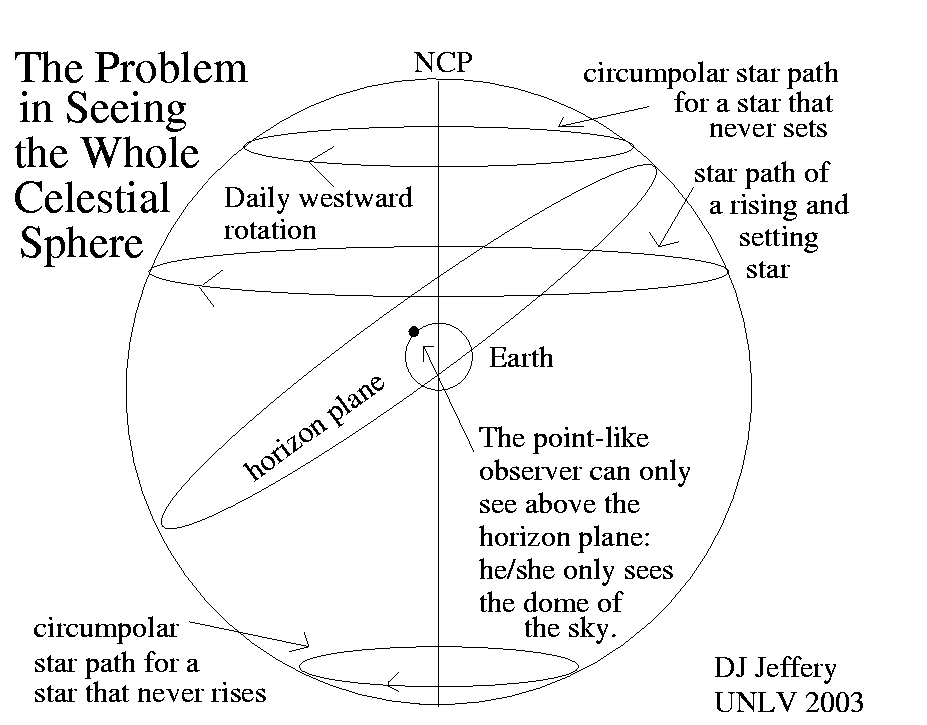
Caption: The celestial sphere and the horizon.
Features:
- The diagram is not-to-scale.
The Earth is a point compared to the celestial sphere.
The observer on the Earth is a point compared to the quasi-infinite plane defined by the horizon.
- The horizon plane
is just a plane
tangent to
the Earth
at the location of the observer.
It is actually centered on the Earth since, as aforesaid, the Earth is point compared to the celestial sphere.
- The horizon itself is the
circle formed by the
intersection of the
horizon plane and the
celestial sphere.
The horizon is a great circle since it cuts the celestial sphere in half.
- The observer ideally sees everything above the
horizon and nothing below it.
- In the Earth-at-rest perspective,
the celestial sphere
rotates westward
once per
sidereal day (23:56:4.0905 = 86164.0905 s)
= 1 day - 4 m + 4.0905 s (on average).
- The
sidereal day (23:56:4.0905 = 86164.0905 s)
= 1 day - 4 m + 4.0905 s (on average)
is the rotation period
relative to the observable universe
(i.e., bulk mass
of the observable universe).
The sidereal day is about 4 minutes shorter than the solar day.
- The solar day
is defined as solar noon
to solar noon
and its mean value is currently ∼ 86400.002 s
(see Wikipedia: Solar time: Introduction).
- The
civil day = 86400 s = 24 hours exactly.
- The
sidereal day (23:56:4.0905 = 86164.0905 s)
= 1 day - 4 m + 4.0905 s (on average)
is the rotation period
relative to the observable universe
(i.e., bulk mass
of the observable universe).
- All natural astronomical objects
are carried by the celestial sphere
as their primary motion.
- Due north
and due south
are given by the projections of
the celestial axis
onto the horizon plane.
The projections
are in the plane
of the meridian.
The plane perpendicular to the horizon plane through the point Earth or the point observer on the point Earth cuts the celestial sphere in a great circle which is the celestial equator.
- Due east
and
due west
are points
90° from due north
on the horizon plane.
They are also the points where
the horizon intersects
celestial equator.
Due east/due west
is
clockwise/counterclockwise
from due north
looking down on the horizon plane
from the zenith
side of the celestial sphere.
Image link: Itself.
Local file: local link: celestial_sphere_002_horizon.html.
File: Celestial sphere file: celestial_sphere_002_horizon.html.